The Battle of Midway Roundtable Opening Remarks
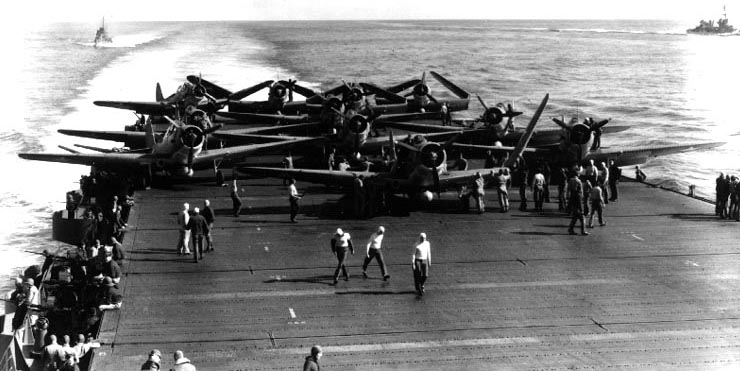
Welcome to the September 2021 issue of The Battle of Midway RoundTable. This month we are offering a significant new feature on the website on a trial basis: a PDF version of the newsletter that you can download and save, or even print if desired. You’ll find a link for it on the home page, in the menu on the left.
The PDF version is done in the same format used by Ron Russell from 2004 until he turned the newsletter over to me after 2011, otherwise the content is the same as what you see in the regular web version. Please let us know if you like it and if you would like us to continue publishing a PDF version.
As you can see from the other links, we have a lot this month—outstanding work by Ron in putting all the articles together. First we have some follow-up to last month’s topics. Then, some further comments on the two Midway movies; mostly the extras you find on the disks if you happen to purchase them. After reading about the extras on the disks I will have to get copies.
So sit back and enjoy our September issue, in either format or both.
Re: DEVASTATORS IN THE BATTLE OF MIDWAY
(See the August issue)
25 August 2021
From: Barrett Tillman
Arizona
Bravo Zulu and OK3 to all hands, one of the finest issues ever!
Minor comment: the TBDs with the 600 series numbers gotta be stateside OTU birds. I remember that print from The Hook files, and think there’s a fuselage band with the star superimposed.
—Barrett sends
Ed. note: Barrett, a prolific aviation author, was the managing editor for The Hook magazine, the journal of The Tailhook Association. His “OK3” above is pilot slang for a totally perfect carrier landing, or something that meets the same standard, and the “OTU” TBDs would be from a training unit. His comment about the small fuselage star roundel makes me wonder if the original large one, like on the wings, was painted out for some reason; maybe to make room for the 600-series side number. —RR
27 August 2021
From: Brian Anderson
Colorado
The pix of the 2 Devastator torpedo bombers is actually a pix of 3 planes I found on:
world-war-2.wikia.org/wiki/Douglas_TBD_Devastator
Noted as a flight over Florida in early 1940s. Not a whole lot more info but it is a deeper pix.
Brian subsequently found and sent us another version of the image with more detail; see below. The inserted text confirms that these are post-Midway planes used solely for training during 1942-43 at Naval Air Station Corpus Christi, perhaps for aircrews destined for future assignment to an Avenger squadron.
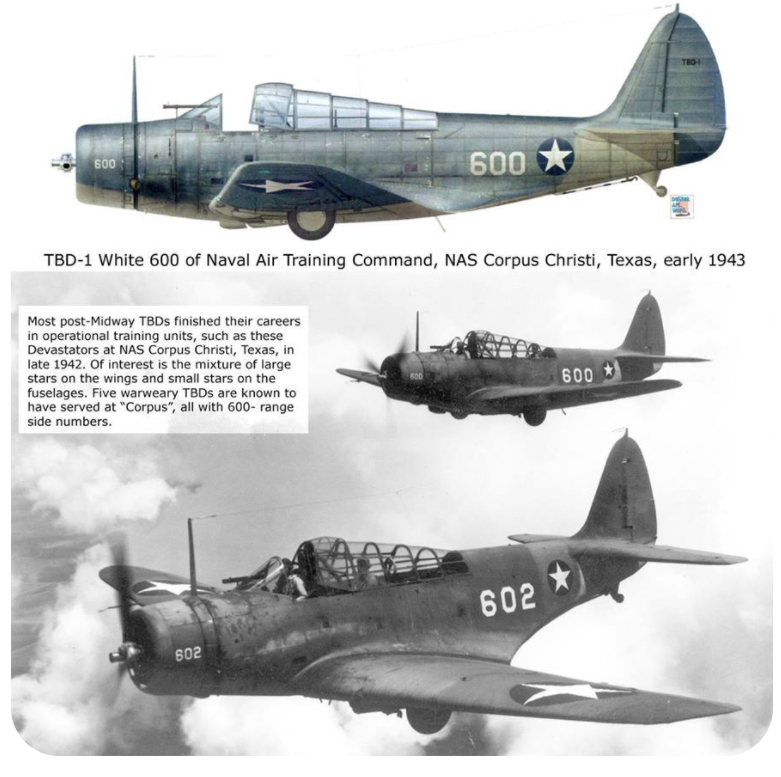
Re: MIDWAY B-26 AIRCRAFT DESIGNATIONS
(See the August issue)
24 August 2021
From: Zsolt Szalanczi
Germany
Many years ago Mark Horan compiled a list of crews and serials of USN, USMC and USAAF planes on Midway. At that time only the name of "Susie-Q" was known. Please note the correct name is Susie-Q and not Suzie-Q. Picture evidence:
Click here
The Internet page
Pacificwrecks.com
has data of three planes with crew and serial numbers. Pages were updated just recently in June 2021.
[Click the serial number links.]
B-26 "Susie-Q" Serial Number
40-1391
B-26 "Satan's Playmate" Serial Number
40-1424
B-26B (no name) Serial Number
41-17570
According to the USA(A)F serial searches (also linked on the pages) the plane with serial
40-1398
crashed on April 1, 1942 on Oahu, so this did not participate in the BOM.
On the other hand, the referenced USA(A)F serial search page of 41-17570 does not list this serial so I am not sure if this is a mistake, also some more serials are missing,
click here
.
In my old files the B-26B serials start with 42, so I think it was anticipated that the two B-26Bs of 69th Bomb. Sq. were brand new.
All the best,
Zsolt
Ed. note: that Pacificwrecks website is an amazing resource. Many thanks to Zsolt for bringing it to our attention on the Roundtable.
Re: AN ALTERNATIVE TO SPRUANCE?
(See the August issue)
25 August 2021
From: Don Boyer
Hawaii
Great issue of the Roundtable this time. I particularly liked the article regarding "alternatives" to Spruance." In my mind there were none available who could have been put on the spot like that. Most importantly, battle was to be joined in a few days, not weeks, there was no time to be vetting choices among available rear admirals that were actually at Pearl. There was nobody as capable or qualified available immediately. Nimitz had been in the saddle for long enough to have evaluated his subordinates, and he had them right where he wanted them, particularly those who he did not want in seagoing commands at that time, including one rear admiral in particular that Nimitz finally had to remind who was CINCPAC.
Nimitz already had Spruance earmarked as his Chief of Staff, about as high a judgment of an officer's capability and qualifications as could be made at the time. He had no peers anywhere near his level of sea-going competence in Pearl or about anywhere else for that matter. Mitscher was moot, he was a captain, and "rear admiral selectee" was meaningless at that time. You don't take command until the stars are on the shoulder boards.
The fact that Nimitz immediately agreed to Halsey's selection indicates that's the choice Nimitz would have made sans any input from Halsey, but of course Nimitz, following naval protocol, had to ask Halsey; it would have been insulting not to. All three of these officers came up through the ranks together, they knew each other inside and out, and Spruance's selection was totally to be expected. Any other choice would have been out of character for both Nimitz and Halsey. Fletcher certainly agreed without qualms; he was as perceptive regarding what subordinates were available as Nimitz and Halsey were.
Regards,
Don Boyer
Re: MIDWAY (2019), ROUND 3
26 August 2019
From: Howard Ady III Nevada
Great issue! Perhaps, in 30-40 years from now, the writers and actors will get it right in “ BOM3.”
—H
Ed. note: My reply to Howard: “Howard, thanks for your message. Yes, it would be nice to still be around when a film producer finally gets it right. Waiting for that to happen should do a lot for our longevity!”
If you’ve been with us for a good long time, and especially if you’ve read the first chapter of No Right to Win, you know that the Battle of Midway Roundtable got started due to Bill Price answering a phone call in his State Department office one day from another government official named “Howard Ady.” Being well-versed about Midway by that time, Bill did a classic double-take, then realized the voice couldn’t possibly belong to the Midway PBY pilot. The caller turned out to be Howard Ady III, the pilot’s son, who gets credit for accidentally propelling Bill toward the launch of what was to become the principal international forum on the BOM.
Howard has kept up with us all these years and was motivated to comment on my multiple criticisms of Midway (2019), as in last month’s newsletter. For a picture from our archives of him with his dad,
click here
. We’ll have more in next month’s newsletter, with some interesting photos. —RR
ROCHEFORT, NIMITZ, AND THE REDMANS
31 August 2021
From: Henry James
Tennessee
I know it can be a thankless task to maintain an archive, but I'm really glad that you do, and I thank you for doing so. Lots of really good stuff there.
Question: Why, given Rochefort's contribution to Nimitz' stunning victory, did Nimitz allow the Redman brothers to sidetrack Rochefort and get him moved to running a floating drydock? I wouldn't have wanted to part with the goose that laid the golden egg. Any thoughts on this?
Ed. note:
Henry, thanks for your message and question. The short answer: Nimitz could not control what happened to Rochefort because the codebreakers were not under Nimitz’ chain command. Hypo was a function of the 14th Naval District, which reported directly to the Navy Department in Washington, where the Redman Brothers had a lock on naval communications, including radio intel.
For the full story we strongly recommend Joe Rochefort’s War by Elliot Carlson. See our review on the Roundtable website:
click here
.
RADIO OPERATIONS IN AN SBD
Ed. note: Last month, Brock Howe sent us an interesting two-part question about the SBD. The first subject, radio communications, appears below. Part 2, about arming the bomb, will follow in the October newsletter.
9 August 2021
From: Brock Howe
Texas
I had a couple questions over the weekend that had me scratching my head about the details of SBD operations:
Communications: At the time of the battle, what were the capabilities and operations of various communications systems? What was the range of voice communications from the aircraft back to the ship and between aircraft? And what was the guidelines for using it (e.g., I know they wanted to minimize radio traffic but I believe it was used at times during the battle). For instance Waldron calling out to Ring that he’s breaking off and could/did McClusky or Leslie (or others) call back to the carrier that they were attacking? And along those lines, what were the protocols for using the Morse code transmissions? Did it have a longer range? Also, I’m sure there were lots of hand and aircraft (e.g., wing waggling) signals that were used to communicate through the squadron and is there a list of those kinds of signals other than obvious ones like pointing at the enemy? And finally, I know some messages were even dropped on the carrier deck via bean bags and was that done just due to a
communications problem? And seems like they couldn’t wait the extra 15 minutes or so to enter the pattern and land to get the message directly from the crew?
Thanks again for sharing your expertise and you’re very valuable to me as I learn more and share more about this history!
Ed. note: Brock, per your communications questions. That’s the hat I wore for 23 years in the USN & USNR, so here goes.
Morse code (“CW” for continuous wave) was used for long distance comms because the operator could hear and understand it much more clearly than voice through atmospheric noise, fading, jamming, and other types of interference that can plague a complex waveform like the human voice. CW is simply turning the transmitter on and off, with the intelligence contained in the sequence of on/off cycles. A good CW operator under decent conditions could send and receive 20 to 40 words per minute or more—I knew an old WW2 vet Chief Radioman who could actually copy 60 w.p.m. while smoking a cigarette and carrying on a conversation with you in the radio room, all while the ship is rolling in heavy seas. (60 w.p.m. is lightning fast for CW, about like a Teletype machine.) As for me, I max’d out at 25 w.p.m., mainly because by the Vietnam era CW was a secondary mode that we didn’t use much—use it or lose it.
But training a CW operator was a lengthy process, which is why the Navy and all the services had specialists to do it. Hence in planes like the SBD you have the second man whom we call the “radioman-gunner” (or R/G), with radioman being his prime job unless immediately involved in combat. In connection with that, he also dealt with the YE-ZB radio homing system, about which we’ve read a great deal here over the years. The ZB converter operated at VHF frequencies, with its output fed to the aircraft’s radio receiver, as shown in these two photos.
ZB converter (left) and radio receiver (right). Two spring clips on the converter’s base plate secure it to the two posts on the top of the receiver’s cabinet.
So, the R/G handled the long-haul radio traffic via CW. The radio frequencies used were in the medium and shortwave bands, roughly 0.1 to 10 mc/s (or today, mHz, “megaHertz”). Radio wave propagation depends on many variables such as the operating frequency, the time of day, the season of the year, the mode and power of the transmitter, and especially the efficiency of the transmitting antenna, which on aircraft was necessarily poor: a resonant antenna at 2 mHz, for example, is 234 feet long if fed at the center. The short, off-center fed wire on the SBD illustrates that challenge.
Voice communication to or from aircraft in WW2 was minimal—you see it all the time in movies, but that’s for the sake of the movie. In Midway (1976), for example, we watch the PBY pilots transmitting their sighting reports to Midway by voice— not. It was actually done in every case by the plane’s aviation radioman, using CW.
The argument over the air between Waldron and Ring as to the HAG’s course was certainly done by voice radio, and by Waldron and Ring themselves, at very short range. Otherwise, the two likely would have had difficulty understanding each other.
The fact that some of the other pilots didn’t hear them at all despite being line-of-sight close illustrates the extent of the problem.
As for the “bean-bag” drop of a written message, that was primarily for maintaining radio silence. It also allowed for delivery of a very detailed written message without the need for encryption or the risk of garble due to some of the above conditions. VB-8’s Roy Gee did that to report the true nature of the Mogami/Mikuma group on June 6th when previous reports were misunderstood to include a carrier, again due to a problem in sending a radio report. (For details on that,
click here
, select “2007-25,” then scroll down to “More about Slim Moore.”)
And no, waiting another 15 minutes after landing the plane on deck would’ve been contrary to the critical need for speed in delivering an enemy contact report. Get the information where it needs to go as clearly and quickly as possible. History is full of examples where battles or entire wars are lost due to the lack of accurate and timely communication. Think Tone-4 in connection with the BOM!
I hope this answers your communication questions. If not, get back to me and I’ll fill in some more blanks.
—RR
MIDWAY (1976) ON BLU-RAY
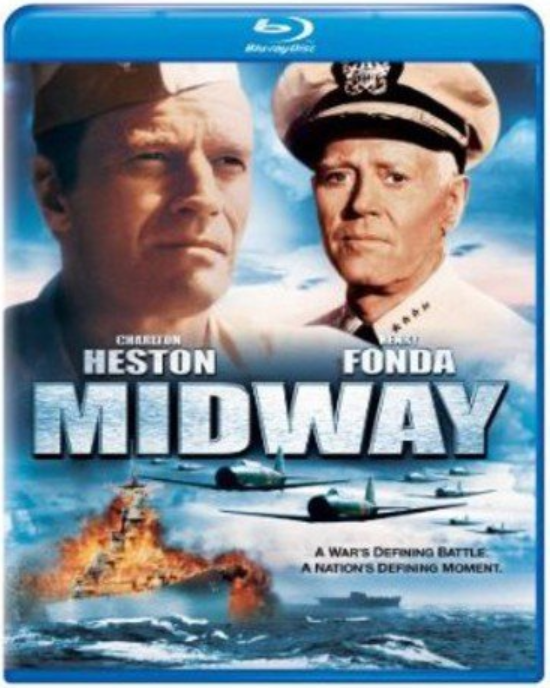
If you’ve been with us a while, you certainly don’t need another review of the 1976 Midway movie. But on the chance that you’re a new member here, or even the slimmer chance that you’ve only seen the 2019 film, click these links for the original Roundtable review of the ’76 production, written in 2004 (rather critical) and our subsequent re-review in 2009 (much kinder):
Click here for 2004 review
(Scroll down to "Dramatizations of the Battle of Midway")
Click here for 2009 review
(Scroll down to “Return to Midway”)
If you want more and have No Right to Win on your bookshelf, see pages 38 and 315. That said, why are the rest of you seeing this subject on the Roundtable yet again? It’s due to our dissection of the DVD version of the 2019 movie in the February and March 2020 issues of the newsletter, plus again last month. The script of that one had much to dislike, but the extra features on the disk were refreshingly good. I got to wondering about the venerable 1976 film, which I only saw in the theater when it was originally released, then several times thereafter on cable TV. Did anyone produce a DVD in later years, and if so, what sort of improvements or added content would be included?
I found a Blu-ray version of Midway-76 online, said to include enhanced video and audio plus several extra features, so I went for it and was not disappointed. My main interest was those added extras, and a couple of them were worth the price of the disk. The first is “The Making of Midway,” 38 minutes of narration largely by Charlton Heston and director Jack Smight, with extensive commentary by producer Robert Mirisch, who explained how hard he tried for realism with the technology and resources available at the time. Smight especially credited actor Toshiro Mifune for added realism, having brought his own IJN uniforms from Japan to ensure their authenticity. Mifune even had a special glove made to simulate Admiral Yamamoto’s missing fingers that he’d lost in combat as a junior officer in 1905.
“The Making of Midway” included a lot of interesting anecdotes about the principal actors, such as Heston who’d been a B-25 radioman-gunner during the war and thus had a strong connection to the script. Mifune, it turned out, spoke no English at all, unlike the real Yamamoto. He does so on screen, but that’s simply a lot of rehearsal and good acting. The film company spent two weeks aboard USS Lexington (CVT-16) getting action footage onboard a carrier, with cosmetic touches permitted by the Navy to simulate a 1942 look. Then there was Robert Mitchum (as Halsey) who initially wanted nothing to do with the movie, believing it would involve “too much work” at that point in his career. He finally relented when Mirisch promised him he wouldn’t have to do anything but relax in bed during one short scene!
The disk’s second truly remarkable feature was “They Were There,” a brief seven minutes of Midway veteran interviews conducted by Charlton Heston, including George Gay, Max Leslie and Joseph Rochefort! Even better, I actually found “They Were There” on Youtube, so you can watch it now:
click here
.
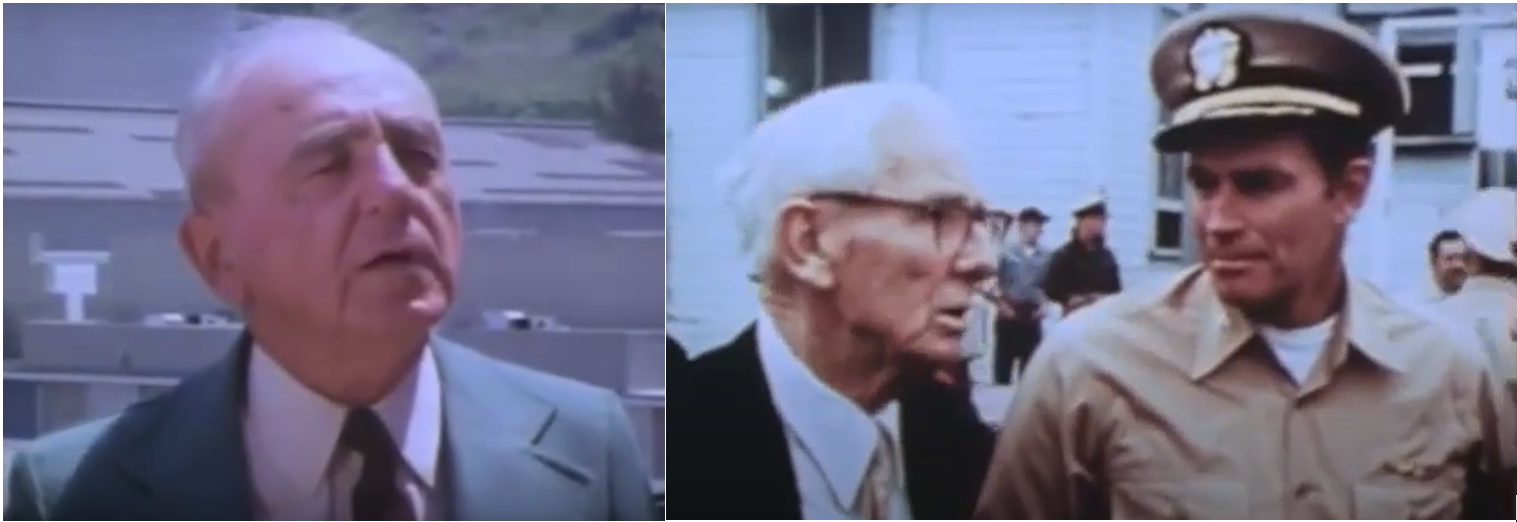
Max Leslie and Joseph Rochefort with Charlton Heston from They Were There
You see Rochefort very briefly at time 0:40 on the video, then with more substance starting at 3:50. Leslie appears at 3:23. It would seem that the interviews were done on the set of the movie itself, as Heston is in his “Captain Garth” uniform.
Other extra features on the disk focused on the musical score by John Williams, the “Sensurround” audio system that was first used with Midway-76, and scenes that were shot for the TV version that you didn’t see in the theatrical release.
Bottom line for this disk: recommended for anyone who might be interested in the making of the much-reviewed 1976 version of Midway, or if you should want to see the film again with superb audio and digitally remastered HD video that looks great on your big screen TV. My cost for the Blu-ray disk was under $10, which I found
here
(click the link). You may find it elsewhere even cheaper in DVD format or with a streaming service like Amazon Prime, although I wouldn’t recommend streaming it as that likely wouldn’t include the extra features. If you have a Blu-ray player, that’s the way to go.
Finally, for those like me who are always alert for any details that aren’t quite right, here’s one that I’m sure the disk’s producers thought no one would notice—the exploding battleship on the front of the box. Never mind that no battleships exploded in the BOM, the image is of the USS Missouri, BB-63! It’s hard to see in the above picture but with the box in hand, “63” is clearly visible on the starboard bow. Mildly amusing, but easy to excuse given the excellent value contained on the disk itself.
—RR
HYPO ON YOUTUBE
In preparing our review of Midway (1976) on Blu-ray, I thought I’d see if its special features were available on Youtube, to save you the bother of getting the disk. Except for “They Were There” as cited above, they’re not to be found. Searches inevitably land you on the special features from the DVD for the 2019 movie, which I’d already seen and reviewed in our February 2020 newsletter. It turns out, though, that you get far more on Youtube than what’s included on the Midway-2019 disk.
The 2019 DVD, or at least my copy of it, has only two significant extra features, both of which got very favorable reviews here in February of ’20:
1. “Getting it Right: the Making of Midway”
2. “The Men of Midway”
But if you let the Youtube version of “Getting it Right” run all the way through, you actually get both of the above plus two more that aren’t on the DVD:
3. “Roland Emmerich: Man on a Mission”
4. “Joe Rochefort: Breaking the Japanese Code”
Number 3 is basically an extension of number 1, but number 4 was very interesting due to its subject and especially for its narration, in large part by two of the best author-historians to ever tackle the Midway story, Craig Symonds and Elliot Carlson, whom we are pleased to include on the Roundtable’s roster. They present a very thorough synopsis of the Rochefort/Hypo story, providing a lot of added insight that’s not included in either the 1976 or 2019 movies.
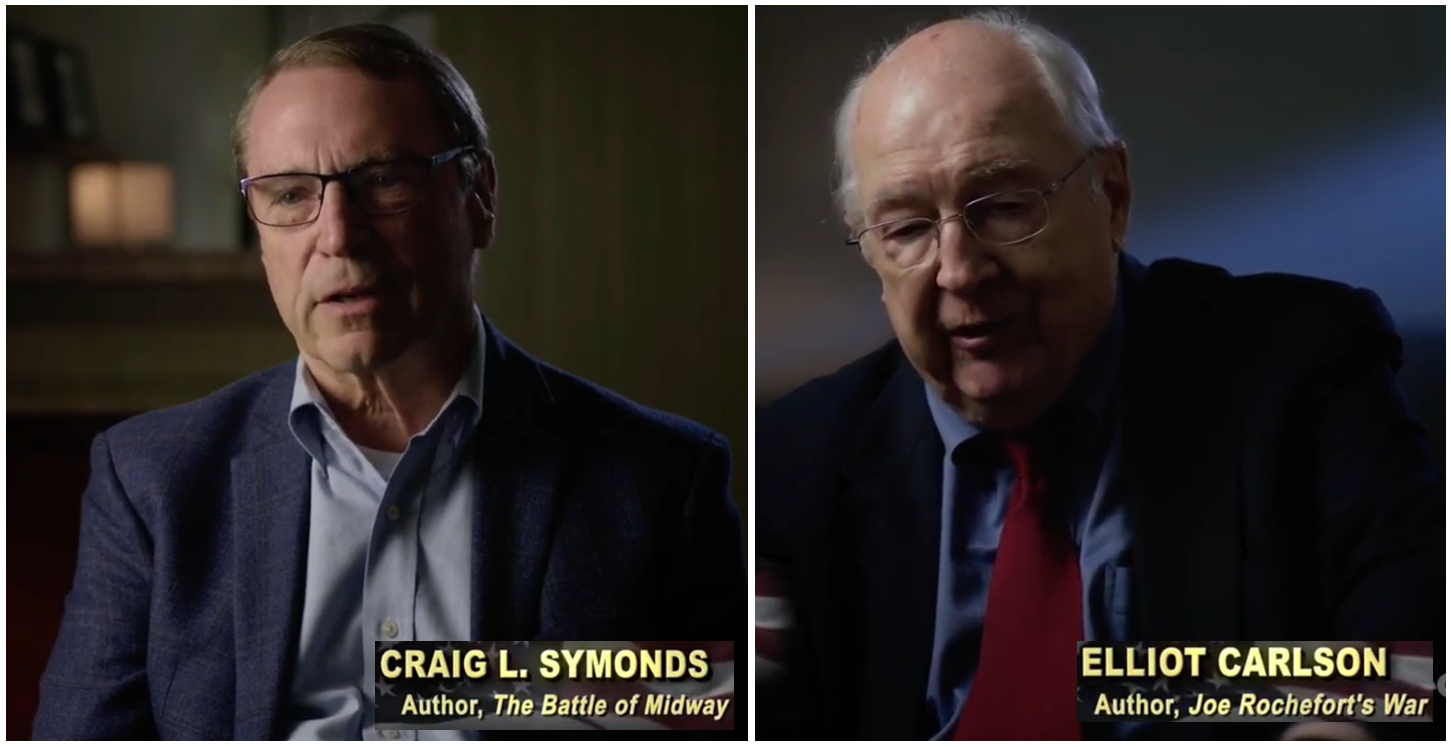
Screenshots from "Joe Rochefort: Breaking the Japanese Code"
To view it on Youtube,
click here
. Those four extra features are definitely worth watching at least once; possibly more interesting than the movie itself. The Rochefort segment starts at 30:35 on the video.
—RR
EARLY USS HORNET PHOTO
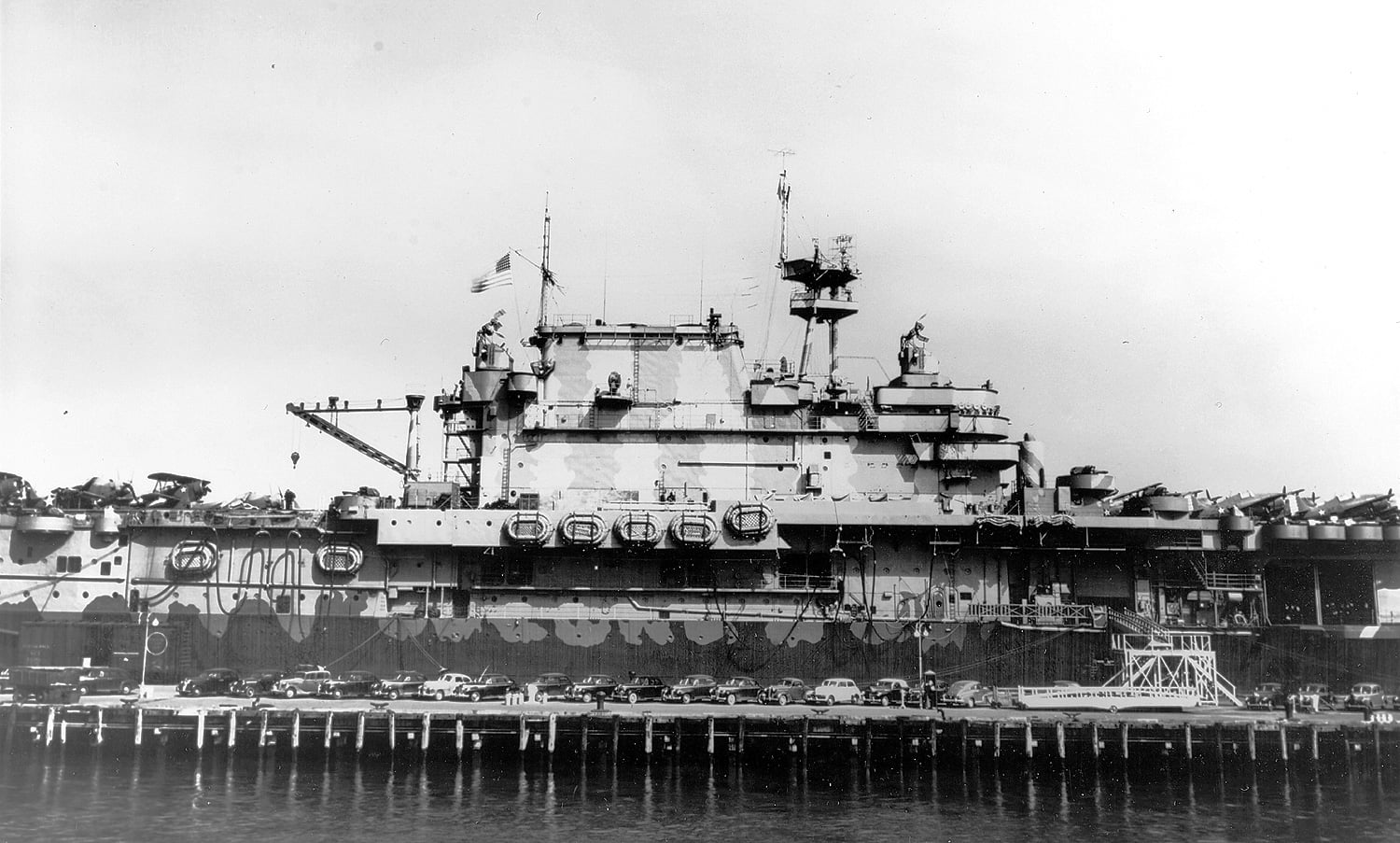
[From Facebook post, 29 July]
USS Hornet (CV-8) at Naval Operating Base Norfolk, Virginia, in February 1942. Aircraft types visible on deck: Douglas TBD-1, Grumman J2F-5 (utility unit), Curtiss SBC-4, and Grumman F4F.
Now, a nitpick for all you ex-USN sailors and shipboard Marines: notice that Hornet is tied to the pier and obviously not underway, although the national ensign is hoisted to the main truck at the rear of the stack—normally done only when underway, right?. Tied to the pier, the colors should’ve been moved to a staff on the fantail. Any guesses why it’s still at the truck? Perhaps the ship has just arrived and the OOD hasn’t shifted colors yet? Or such details not a big concern two months after Pearl Harbor? Any other explanations? Send in your opinions and see them here next month.
—RR
DAUNTLESS, THE NOVEL
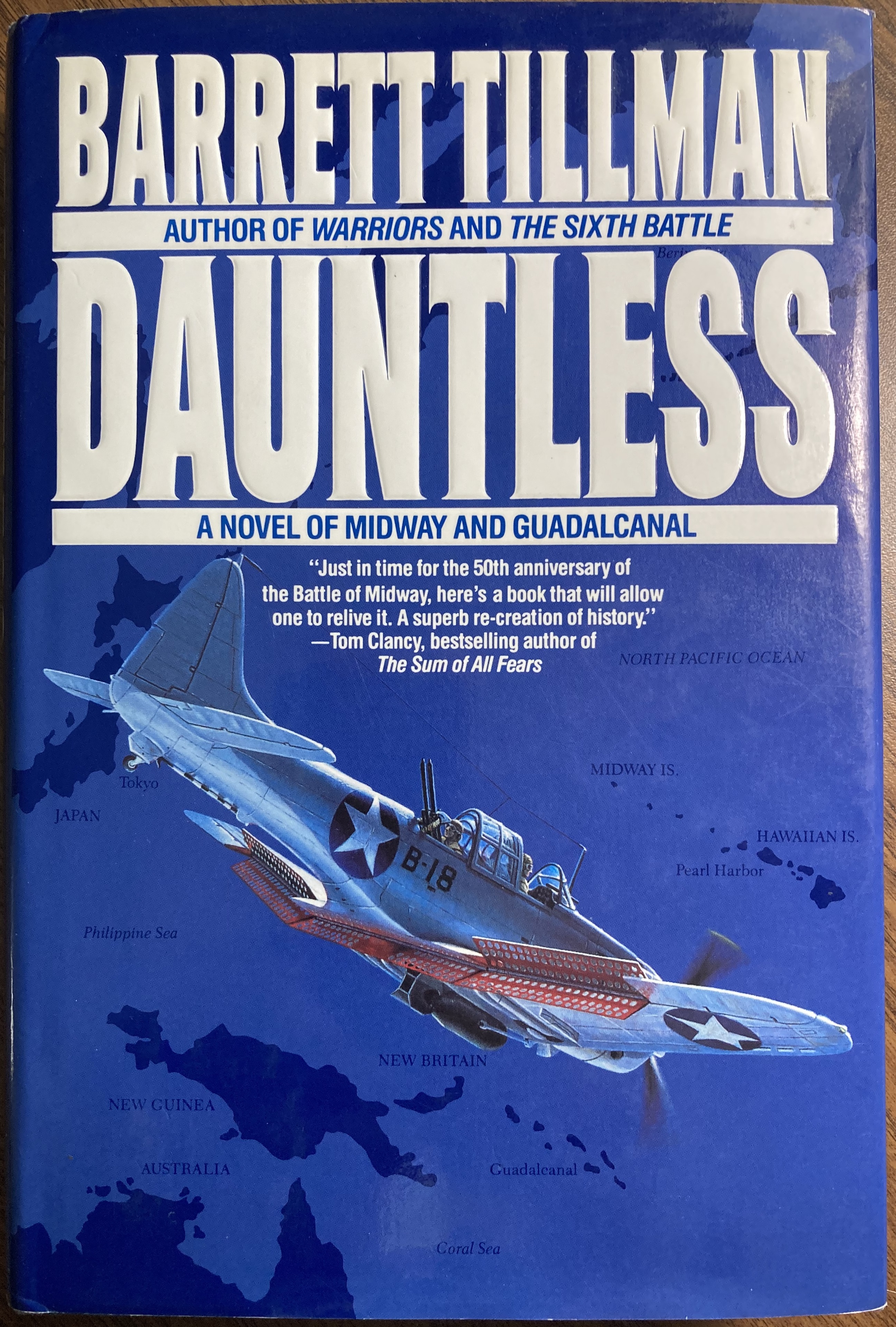
In last month’s newsletter, I offered the opinion that the 2019 Midway movie would have been much more acceptable if the script had focused on a ficitonal pilot instead of badly fictionalizing one of Midway’s best known heroes. I cited a couple examples where a writer had pulled that off nicely, including Barrett Tillman in his 1992 novel, Dauntless. The main character in that one, Ensign Phil “Buck” Rogers of VB-3 would have made a fine centerpiece in Midway-2019.
But enough about the movie. I’d originally read Dauntless shortly after joining the Roundtable in 2000, then thought no more about it until I had a reason to recall “Ensign Rogers” in our August newsletter. After Thom had posted it on the website, I pulled the book off the shelf, blew off the dust, and read it again. The short review: it’s hands-down the best real-time version of the BOM in print. If you’re only interested in the battle’s history, stick with our recommended references like Shattered Sword and Symonds’ The Battle of Midway. But to get a sense of what the battle was like in the present tense for those who were actually there, look no further. Barrett has managed to capture a you-are-there sensation that won’t be found in a history book, and he’s done so with a level of gritty detail that can only come from a writer who’s an expert in all facets of his subject.
The book adheres dead-on with the true history of the battle, only deviating slightly with a small number of fictional characters inserted amid familiar historic names in order to tell key portions of the story with believeable dialogue and action. That gets you a complete picture of what life was like for those men, whether in the midst of battle or on liberty in Honolulu—like when Lieutenant Wallace Short and his VB-5 pilots, fresh from the Coral Sea, take over the officers’ club bar at Ford Island with ensuring chaos, just prior to their ship’s departure for Midway. That kind of real-life vignette is peppered liberally throughout the book; the sort of added touch you don’t get by reading dry history.
As a bonus, the last few chapters cover the first months of the Guadalcanal campaign, with Rogers among the Yorktown and Saratoga pilots who wound up on the island in the “Cactus Air Force.” Again, it’s Guadalcanal in real time, with you-can’t-put-it-down intensity.
I highly recommend Dauntless to any reader who wants a feel for the BOM that’s pretty much what the guys who lived it felt at the time. New copies are available from online vendors or directly
from the author
, or you can find them at favorable prices on the used book market. Check it out on Amazon, eBay, and maybe others.
Full disclosure: I’ve done editing work for Barrett on some of his other books, but not this one, which was published long before I’d heard of him or the BOMRT. So this review is totally independent, which means I’m free to point out the two mistakes I found in the book: the R/G on the front cover facing aft while his SBD is diving on a target, and the mention of a “Foxtrot” signal flag being hoisted on the Yorktown; nomenclature that didn’t exist until the 1950s. But that’s actually a major complement—two miniscule nitpicks in a book of this scope is doggone good!
Warning: Barrett has a sequel to the Ensign Rogers story, Hellcats (Potomac Books, 1996). Reading Dauntless may get you hooked. (As I write this, my copy is in the mail.)
—RR
MORE COMMENTS ABOUT THE AUGUST ISSUE
25 August 2021
From: Ralph Brading
Australia
Got it, thanks!
26 August 2021
From: Paul Sanchez
Texas
Thank you!
26 August 2021
From: Terry Gower
Virginia
Thanks!
Keep up the great work!
26 August 2021
From: Sam Silberstein
Florida
Thanks Thom & Ron for a wealth of wonderful links. You are amazing! Your BoMRT is an amazing source!
Congrats and Mazel Tov on your 24th year! May you live long and prosper.
A sincere thank you goes to everyone who takes the time to send in messages like these; it is appreciated very much. We are particularly gratified to note the continued support of members who have been with the Roundtable a very long time, going back even into the last century. But whether you came to us recently or you’ve been on board since Bill Price was filling your inbox every day, it’s really nice to know that you’re out there.
As always, your contributions are most welcome, whether it’s just a brief comment like those above, a probing question, or a significant composition on a BOM-related topic—it all works, and is the reason for the Roundtable’s enduring success. Keep them coming, and we’ll do it all again next month.
|